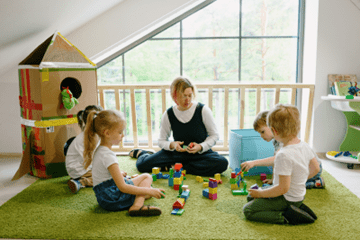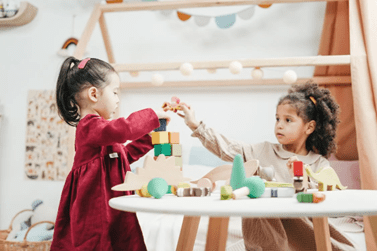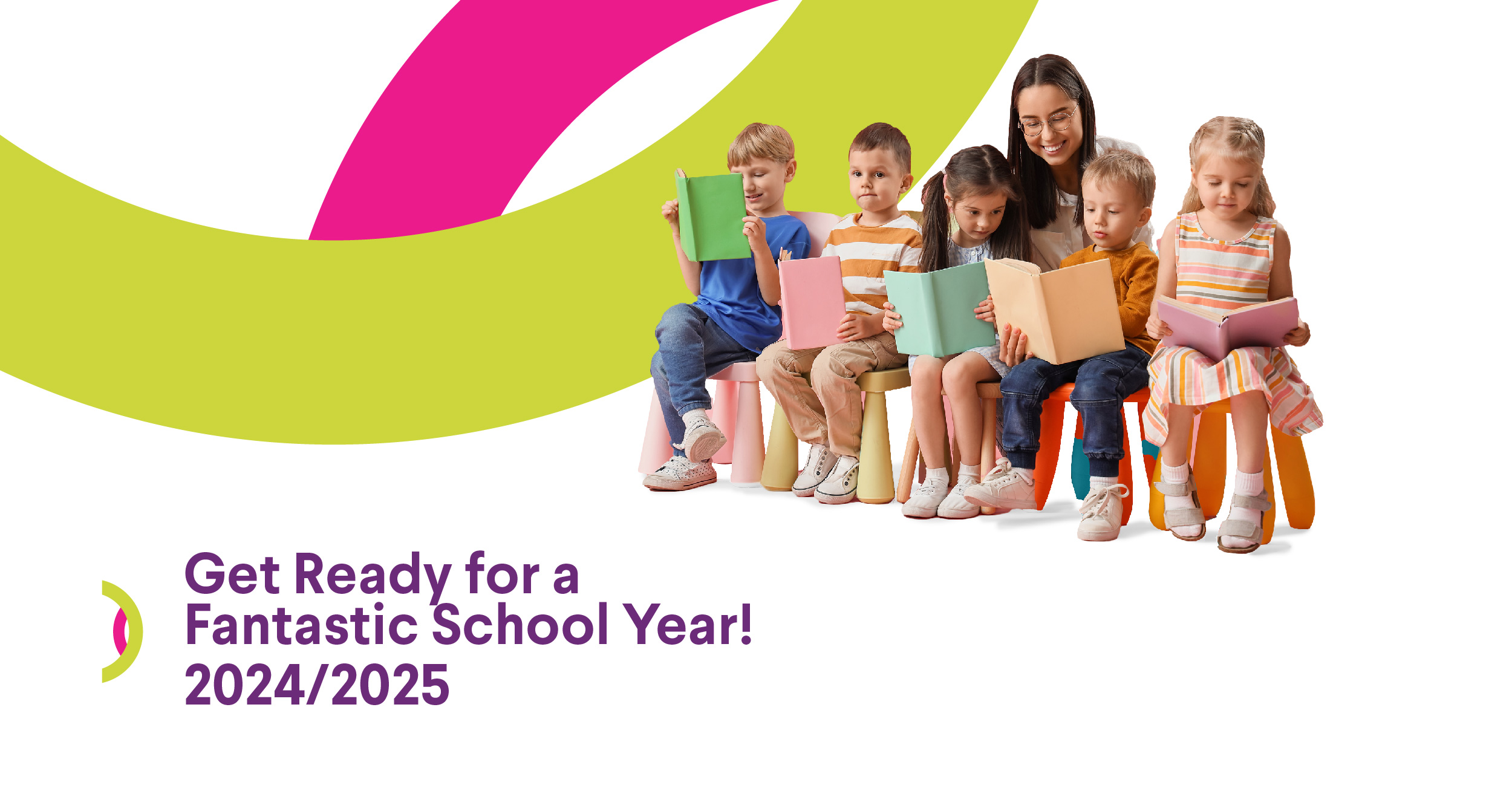One of the most significant benefits of having a child attend preschool is the development of their social and emotional skills. Letters, numbers, and shapes are all secondary to developing healthy social and emotional skills; if a child isn’t well adjusted socially or emotionally, they don’t have the capacity to learn.
Research tells us that happy, confident children learn better and adjust quicker to new situations and changes. Below are some of the top ways teachers and parents can help pre-schoolers learn to socialize in the classroom.
Make the Classroom Inviting
The first step in helping children socialize is making the classroom an inviting atmosphere they want to join daily. Greet each child personally upon arrival and ask them a question.
- Hello Sarah, how was your dance class yesterday?
- Good morning Adam. What did you eat for breakfast today?
You can also comment on something about them. However, base personal appearance comments on facts and avoid using words like cute, pretty, cool, etc.
- Good morning Celine! I see you have purple unicorns on your dress today!
- Good Morning Jacob! You decided to wear all green today; I love the color green.
- Hello Noor! You cut your hair. Do you like it shorter?
The classroom should be clean, well-stocked, free of clutter, and divided into different areas the children can play in upon arrival. Hang pictures of the children and their families around the room to invite discussion.
When only a few children are present, limiting the available play areas will encourage children to play together and socialize.
Stay Close While Children are Playing
Young children don’t know how to socialize properly because they are still learning. Therefore teachers and parents must stay close as children play and be on hand to help solve any conflicts. You don’t have to be involved in every game or conversation, but being nearby allows you to help should the need arise.

When helping children with conflicts, remember, “Teach Don’t Tell.” For example, telling a child, “You have to share,” is meaningless if they don’t understand why or how to share.
- Ari, you’ve been playing with the truck for a long time, and giving Ben a turn would make him happy. So how about in 5 minutes, we let Ben have a turn with the truck?
When possible, guide children and encourage them to solve peer problems independently.
- Shira, Beth would like a turn with the purple marker. What could you do so Beth can have a turn too?
- Adil, Farrah is using those blocks right now. I know you would like a turn, but what could you do while you wait?
Supply Duplicate Toys
Supplying duplicate toys helps prevent disagreements between children. If children are focused on ensuring they get the only red fire truck or the only baby doll in a pink dress, they won’t be able to focus on positive interactions with their peers.
You don’t need to have doubles or triples of every item. However, if you notice a specific toy is popular amongst your students, consider asking other classes if they have a similar one you could borrow or purchasing additional ones.

Hold Classroom Discussions
Classroom discussions give children opportunities to practice their social skills. Meal times are an especially great time to engage in conversation. You should also have group discussions while reading books, conducting science experiments, and at the beginning of the day as a way to welcome everyone each morning.
Discussions teach children the rules of conversation, help them understand different points of view, and teach them new language and vocabulary.
- Sing songs and teach finger plays about handwashing
- Teach the children a song to sing while they wash their hands
- Conduct science experiments to show how germs travel and stick
- Read books about hygiene and handwashing
- Play hygiene charades where the children act out different hygiene practices like brushing their teeth or combing their hair











